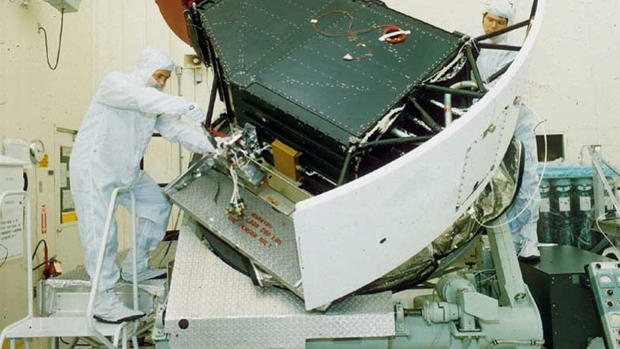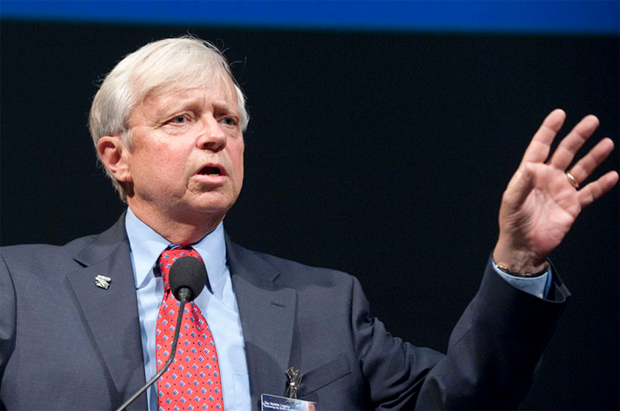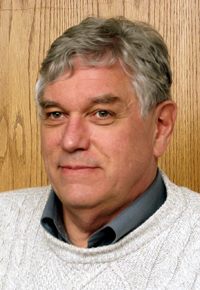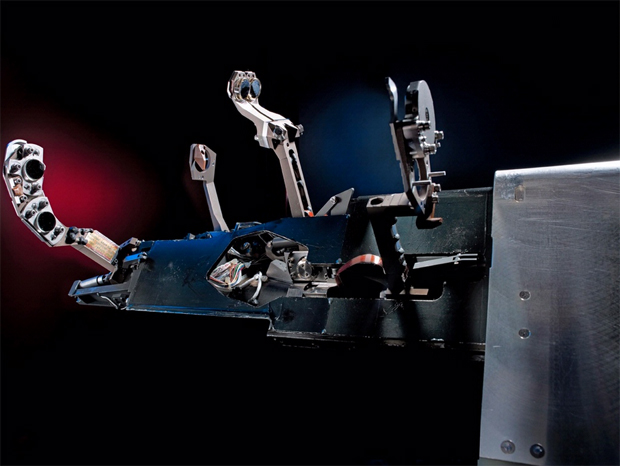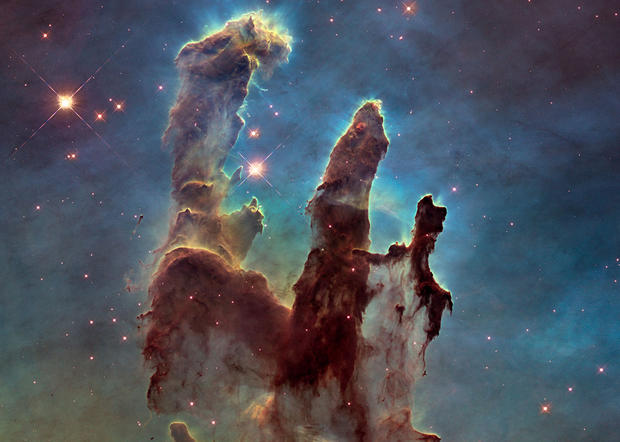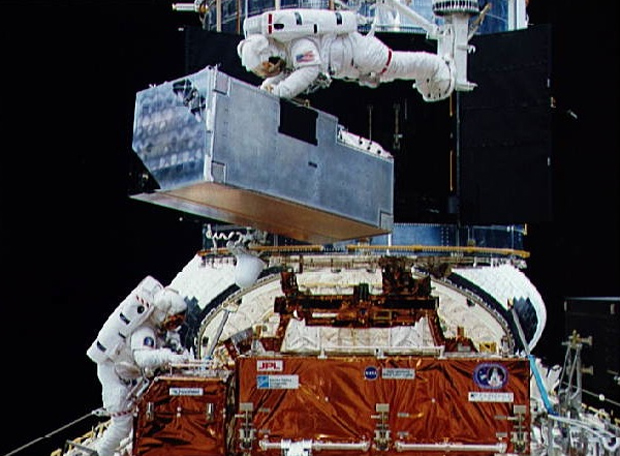How NASA fixed Hubble's flawed vision - and reputation
Ed Weiler knew he was about to walk into the lion's den.
It was June 27, 1990, and Weiler, the chief scientist with the Hubble Space Telescope program, was about to tell a room full of skeptical reporters that the newly launched $1.5 billion observatory's supposedly flawless 94.5-inch primary mirror had been ground to the wrong shape and was unable to bring starlight to a crisp focus.
Just two months earlier, to great fanfare and bold promises about the wonders Hubble would reveal, the space telescope had been launched aboard the space shuttle Discovery. Four weeks later, after working through the usual sorts of commissioning snags, a "first light" image of a nondescript star field was downlinked and proudly displayed.
While superior to ground-based views, the image did not appear to be in razor-sharp focus, not unusual when it comes to fine tuning a new telescope -- not to mention on that was orbiting 360 miles up. Engineers spent days moving Hubble's secondary mirror ever so slightly, taking picture after picture and analyzing the results.
To their dismay, Hubble simply could not achieve a crisp focus.
Instead of bringing 70 percent of a star's light to the same focal point, the mirror could only manage 10 percent to 15 percent. Detailed analysis by increasingly concerned engineers and opticians eventually found the shape of the concave mirror, moving from the center to the outer edge, was too shallow by up to 2 microns -- a tiny fraction of the width of a human hair.
But that was more than enough to turn the most heralded telescope ever built into a laughing stock, the butt of derisive late-night television jokes and the subject of outrage on Capitol Hill.
But it was not immediately clear what the problem might be or what, if anything, could be done to fix it. Actuators attached to the back of the mirror could be adjusted to make very slight changes to its shape, but the problem appeared to go well beyond that.
"It was like scratching your head, how could this thing not want to focus? A temperature problem?" Weiler recalled in an interview. "At first, people thought the mirror was misshapen in the sense that it was slightly misshapen and we could take it out with the actuators. The actuators could take out a lot of bumps and valleys. The trouble was, it wasn't bumps and valleys, the entire parabola was wrong."
It was, in fact, a textbook case of spherical aberration, later determined to be the result of a small, undocumented 3 mm-wide washer a technician had inserted in a device called a null corrector that was used to check the mirror's shape during its fabrication years earlier.
Weiler was devastated.
"If you had polled all the engineers and scientists at the Cape the night before launch for the top 10 concerns they had, what could break on Hubble or what wouldn't work on Hubble, I would bet my house and a lot more than not one of them would put on their list the mirror's the wrong shape and we've got spherical aberration," he said. "Nobody worried about that, because we were assured by the optics guys that we had the most perfect mirror every ground by humans on Earth.
"We were in denial from May 1990 till about early June. I remember my final moment when (astronomer) Sandy Faber, at a meeting on the optical problems we were having, leaned over and said 'I'm convinced now, we have spherical aberration.' When she said that to me, I finally believed it, because I really trusted Sandy."
Over the next few weeks, engineers precisely mapped the mirror's shape, discovering it had been ground just as perfectly as advertised, but to exactly the wrong shape.
While the detective work was going on, NASA engineers scrambled to come up with possible fixes, everything from sending a spacewalking astronaut into Hubble's optical tube to replace the telescope's secondary mirror, to installing a circular shade around the opening of the tube, reducing the aperture and improving the focus by blocking out the outer regions of the primary mirror.
But first, NASA had to own up to spherical aberration.
As the Hubble program scientist at NASA Headquarters, Weiler was the public face of the space observatory and it fell to him to tell the world that the most expensive civilian satellite ever built was the victim of the most basic of optical errors, a defect that struck many as a sign NASA had lost its edge.
He also knew it would provide ammunition to critics who worried NASA no longer had the technical competence to build its long-sought space station, the centerpiece of the agency's human space program. As Lennard Fisk, NASA's associate administrator for space science and Weiler's boss put it when he first learned of spherical aberration: "Space science just had its Challenger accident."
The morning of the news conference to officially announce the mirror defect, Weiler attended a science working group meeting at the Goddard Space Flight Center in Greenbelt, Maryland. It was an already scheduled meeting to review what Hubble's five primary instruments could, and could not, do with spherical aberration.
There was little or no impact on Hubble's High Speed Photometer, designed to simply measure the intensity of starlight. But two light-splitting spectrographs -- one designed for faint objects and the other for high-resolution observations -- could only do about half of their planned observations. And the European Space Agency's Faint Object Camera, sensitive to ultraviolet light, was pretty much "blown out of the water," Weiler said.
But the mirror's biggest impact was on the Wide Field Planetary Camera, the instrument expected to provide the dazzling visible and near-infrared images most easily understandable by the public and of tremendous value to astronomers.
"The real killer was Jim Westphal (the WFPC principal investigator at the Jet Propulsion Laboratory in Pasadena, California), who tended to be very negative," Weiler recalled. "Basically, he said he couldn't do anything. So that's what I was preparing to walk into the press conference with."
But as it turned out, Weiler had two aces up his sleeve. One he knew about, one he didn't.
The ace he knew about was drawn seven years earlier, when Weiler kicked off work to build a backup camera, the Wide Field Planetary Camera 2, a carbon copy of the original. John Trauger was the principal investigator, the man in charge of the instrument at JPL.
The ace Weiler didn't yet realize was built into the design of Trauger's camera.
Shortly after the first light image came down, "one of the grand old men of optics here at JPL, Aden Meinel, he and his wife Marjorie wanted to see what the image looked like," Trauger said in an interview. "We brought it up on the screen. ... And he looked at that for five minutes and he said 'that looks like spherical aberration.'
"That was the first time I heard spherical aberration," Trauger recalled. "The thing was, he also said 'well, if it is spherical aberration, you could fix it with Wide Field Planetary Camera 2.' He knew that we had these nickel-sized mirrors in our optical system, which received a sharp image of the primary mirror itself. ... The very last mirror before the image is created on our CCD was an opportunity to straighten the wavefront out. He recognized that, too."
By giving that mirror a prescription that exactly countered the spherical aberration in the primary mirror, the WFPC 2 would be able to achieve a perfect focus and do all of the science that was intended.
Trauger consulted optical experts at JPL and "within a month of that realization, we had put together a convincing story. That led to what I thought was a very dramatic meeting at the end of June. Everybody got together (at Goddard) and said what have we got, what science can we do and what can we do about it? And we were extremely confident that we had not just a solution, but a solution that would be wide field, it would completely restore what we were doing."
And so, during the science working group meeting at Goddard, Trauger told Weiler "you know, we think we can fix it," Weiler recalled. "I said what do you mean you think you can fix it?"
Trauger explained the proposed solution and Weiler, in effect grasping a lifeline, went to the dreaded news conference, fervently hoping Trauger was right. Deputy project manager Jean Olivier told the throng of reporters that Hubble suffered from spherical aberration so perfect it likely was caused during the mirror's fabrication.
Weiler told the crowd "it would be dishonest for me to say the mood of the scientists is very happy right now. We're all very frustrated. But we should be able to fix it" during the next shuttle servicing mission.
But the WFPC 2 was just one instrument, albeit one of the most important from a public perception standpoint. It still wasn't clear what could be done about Hubble's other instruments -- the Faint Object Camera, the Goddard High Resolution Spectrograph, the Faint Object Spectrograph and the High Speed Photometer.
In a tale that would strain credulity in any other mission, the answer occurred to James. Crocker, a senior engineer at Ball Aerospace Corp., one morning while standing in a shower during a trip to Germany.
"He was looking at the European showers with the handles that flip down and all that," Weiler said. "And the idea came to him you know, we could take out the High Speed Photometer and put in a box and have a bunch of handles that come up with little mirrors that deploy and refocus the light from the telescope mirror into the two spectrographs and the FOC."
Crocker brought that idea back to the United Station and by the end of 1990, the Corrective Optics Space Telescope Axial Replacement, or COSTAR, was under contract, scheduled for launch aboard the shuttle Endeavour in 1993, along with the WFPC 2, a new set of solar arrays and other components.
The servicing mission went off without a hitch, and on Dec. 18, 1993, just five days after Endeavour returned to Earth, Trauger beeped Weiler, telling him that checkout operations had gone smoothly and that first light images from WFPC 2 were expected at the Space Telescope Science Institute that night.
"About 50 astronomers and institute engineers were gathered around a screen and that first picture came down," Weiler recalled. "And that is the moment I knew we had fixed it. The first image had a star right in the center. It was only that star, but it was crystal sharp clear. ... People just went crazy. I think when I saw the image, I said 'holy shit!' I thought (NASA Administrator) Dan Goldin was going to fire me the next day and instead, he congratulated me."
After collecting images and other data from Hubble's full suite of instruments, NASA unveiled the results to the public during a Jan. 13, 1994, news conference at Goddard that was timed to coincide with the winter meeting of the American Astronomical Society in nearby Washington.
Before the news briefing, Maryland Senator Barbara Mikulski, who famously asked whether NASA was building "techno turkeys" during a hearing in the wake of spherical aberration, joined Goldin and Weiler for a preview of before-and-after pictures from WFPC 2 and the COSTAR-assisted Faint Object Camera.
"She walks in the room and I had on the left side of the table 'before' images and on the right hand side of the table today's images," Weiler said. "She walked in and looked at them and her reaction was, 'my God, it's like putting my glasses on!' It was vindication. Redemption."
At the news conference, she said "the trouble with Hubble is over."
The $50 million COSTAR is frequently referred to as the instrument that "fixed" Hubble, but to Weiler and many other Hubble veterans, the real hero was the $23.9 million Wide Field Planetary Camera 2. While the instruments serviced by COSTAR all produced world-class science, it was the JPL camera that generated the lion's share of the big-picture science after the servicing mission. And it generated the steady stream of spectacular pictures that sparked virtually all of the public's interest.
"I hope before I leave this Earth I correct one misimpression," Weiler said. "The COSTAR was NOT the fix to the Hubble Space Telescope. WFPC 2 was. And I say that for a very simple reason. Go look at all the press articles and the science that came out of Hubble in 1994 and 1995."
Weiler hastened to add he was not "knocking" COSTAR. The ingenious instrument, with its 10 small mirrors and motorized appendages, was an elegant solution to an extraordinarily complex problem. But in Weiler's view, it was the pictures, not the spectra, that "saved" Hubble in the eyes of the public.
Trauger's camera would end up operating for 15-and-a-half years aboard Hubble. And it was the only instrument that was still functioning when the final shuttle servicing crew showed up.
"With a little hubris here, in retrospect, it was still working when the servicing mission in 2009 went up to replace the camera with Wide Field Camera 3, which is a great thing," Trauger said. "Our WFPC was getting old and tired, you might say, but it was the only instrument that was working. It was doing everything for the last year or two. We all feel pretty good about that."
WFPC 2 and COSTAR, which was no longer in use by that point, were removed during the 2009 servicing mission and returned to Earth. Both are now on display at the Smithsonian Institution's National Air and Space Museum in Washington, DC.
A version of this story originally appeared in Astronomy Now.
